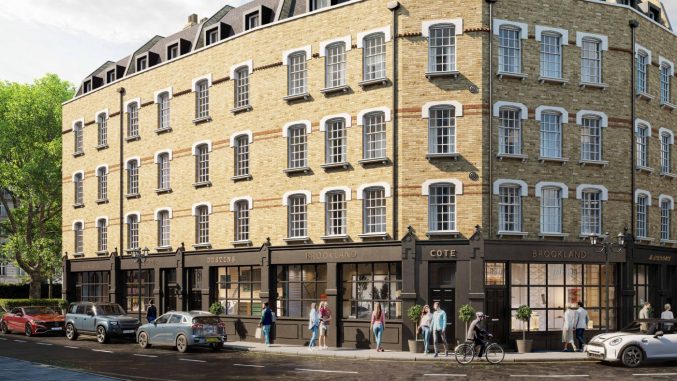Lockdown 2.0: how is the bridging industry coping?
By Helen Crane

If it ends as planned on 2 December, England is now more than halfway through the second Covid-19 lockdown – or ‘lockdown 2.0’ to give it its more popular name.
While this iteration did not inspire the same fear and uncertainty as the first one in March, it has still caused disruption to businesses. Many staff that had returned to the office have been sent home once again, and most face-to-face meetings have been put on hold.
So how is all of this affecting the property finance world? Is lending continuing as it had been since the end of the first lockdown – and have firms changed their approach to working from home the second time around?
Unsurprisingly, the disruption of a second lockdown has meant things are running a little slower.
While the housing market is still open for business, it is not quite business as usual.
The government says that estate and letting agents and removals firms can continue to work, and people looking to buy a property can still undertake viewings. But on the other hand, many estate agents have closed their offices to walk-ins, and dropping in to your solicitor’s office to sign a document is off the table.
“Borrowers are unable to sign legal documents as easily, valuers have restrictions on entering properties, there is increased home working – and because of this things are taking a little longer than usual,” says Nick Jones, commercial director at Roma Finance.
For some brokers, this is leading to what might appear like a short-term fall in activity because loans are being finalised less quickly –although they are actually busier based on the number of applications going through.
“Many lenders are taking longer to process applications, and as a result, we are seeing a ‘dip’ in activity in the short term,” says James Mole, managing director, London Belgravia Specialist Finance.
But while there are plenty of short-term frustrations, the market is still moving in a way that it was not during the first lockdown.
“The majority are able to do their job, it is just taking longer and they are dealing with the inevitable backlog which is set to continue for months,” Jones continues.
The consensus is that lockdown 2.0 is very much an easier ride than the first one, when lenders panicked and cut funding lines.
“The current situation is a lot safer than what was happening in April and May when funding lines were cut,” says Simon Allen, founder of broker Searchlight Finance. “Lots of lenders are still offering 75% in the buy-to-let market, for example.”
The only nuisance this time around, he says, is “moving the office to home and having a poodle bark at me all day.”
Indeed, many specialist finance companies actually think that the uncertainty caused by the pandemic and repeated lockdowns has been good for long-term business.
“In the mid to long term, the combination of uncertainty and delays will make us busier overall,” says Mole. “Although the range of finance options are limited in comparison to the start of the year, investors can still apply for mortgages and bridging loans – which keeps the overall property market moving forward and developers and finance brokers alike happy.”
While there is little evidence to back it up just yet, lenders feel that home buyers might be more likely to turn to specialist finance when a traditional property deal is close to falling out of bed, for example, or when mainstream lenders are pulling mortgage products from the market.
This is particularly the case when it comes to the deadline for benefiting from the government’s temporary freeze on Stamp Duty, which ends on 31 March.
“Estate agents are telling me that if a buyer hasn’t already agreed a sale, the deadline may already have passed in the traditional mortgage market,” says Jones.
“Buyers and intermediaries may require other lending solutions such as bridging finance as a way of securing properties before the end of March to take advantage of the stamp duty tax break – especially as reported service levels are elongating in the traditional mortgage markets.”
In general, he says that Roma Finance is speaking to more new brokers and that business is increasing.
Tiba Raja, executive director at bridging specialist Market Financial Solutions, says that she has also seen a rise in queries since the beginning of the second lockdown.
“We are quite busy,” she says. “We are doing a lot of lending to people buying houses of multiple occupancy (HMOs), and people converting houses into flats.”
She believes that the agility that bridging finance offers has helped to draw in new customers, particularly those who have been let down by other lenders as a result of the pandemic. Indeed, she says many of MFS’s new clients have come to them after being been “left in limbo” elsewhere.
“Maybe other lenders have promised them they are able to do a deal, then as they go through the journey their risk appetite changes and the client comes to us,” she explains.
In the buy-to-let mortgage market, investors are using the lockdown to get their ducks in a row.
“Professionals are remortgaging and keeping part of the cash, because they think there is going to be a property correction next March after the stamp duty discount ends,” says Allen. “Clients with properties in their own names have been looking at switching to a company name for some time, and have decided now is the time to do it.”
While business is still growing for many brokers, clients are definitely feeling more cautious.
“We have noticed more apprehension from some clients around getting the solicitors started on their projects,” says Jones. “This is in the main because there was no predetermined date [that lockdown would end]. Business is still growing albeit this circumstance, but we’ll continue to monitor this situation.”
This is typically the case with larger development projects because they have more moving parts. Not all clients fit into this mould, though, which is reflected in the fact that Roma has commissioned its biggest development loan to date during the pandemic.
Another trend that Raja has noticed is that people are taking out bridging loans for longer periods.
“Although we offer bridges from three months, people are tending to go for longer periods,” she says. “A lot of people have increased to six to nine months. They like to have extra leeway in case they find it hard to get a mortgage.”
For the industry, the focus is understandably on serving their clients as best they can in these uncertain times. But how are the lenders and brokers themselves coping in lockdown 2.0?
Most are predominantly working from home, although some are opening their office on a rota system for staff that do feel the need to use it.
And many say they are finding adjusting to home working much easier this time around, as they got the right technology in place during the first lockdown.
“In lockdown one, we created a CRM system so people can work from home,” says Raja. “In terms of contract signing, we would usually have to courier documents but now we accept scanned signatures. We learned from lockdown one ways we can work better.”
Electronic signatures becoming more widely accepted could be one of the positives to come out of the lockdown – and some are even taking another look at automated valuations.
“Some lenders have always been there, but more people are looking at it for the traditional residential market,” says Allen. However, he sounds a note of caution. “It comes with a lower loan-to-value because of the risk involved – I had an example where I walked through the door and there was no floor,” he says.
Another positive to come out of working from home is that more time is being spent on professional development. “The bridging industry has put on webinars, done Zoom calls – there is a lot more education in the sector and that didn’t happen before,” Allen adds.
As in the first lockdown, meetings on Zoom and Microsoft Teams are once again the order of the day. “We do a daily staff meeting on Zoom so the staff can see each other. But it’s not easy managing people from home,” Raja says.
While client services are running relatively smoothly, managers agree that keeping up staff morale and making sure their staff still feel like part of a team has been a bigger challenge.
“We make concerted efforts to speak with our teams frequently to check that they have what they need and are coping with the change,” says Mole.
All in all, the industry is coping fine with lockdown 2.0 – but they would still prefer things to be back to normal.
“Whilst working from home is certainly productive, we believe nothing quite compares to being in the building”, Mole continues. “Socially distanced, but together.”

Helen Crane is a freelance journalist specialising in property and personal finance. She previously worked at London daily newspaper City A.M and on the trade publication, Property Week.










You must be logged in to post a comment.